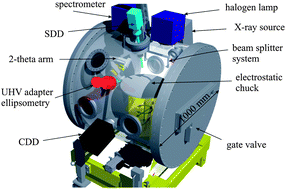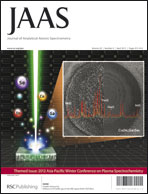The scaling down of critical dimensions for the manufacturing of nanoelectronics requires the continuous introduction of new materials. The results of the analysis of thin high-k films made from Al2O3 as reference samples were used at multiple laboratories to show the power and strength of complementary metrology, e.g. using various techniques, such as synchrotron radiation X-ray spectrometry, ‘table top’ grazing incidence X-ray spectrometry and X-ray reflectometry, and spectroscopic ellipsometry. The layer thicknesses and material parameters validated by several analytical techniques demonstrate the successes of the use of complementary metrology. The requirement for validation, assurance, and support using differing analytical methods is driving the integration of multiple methods into one tool. This paper proposes an integrated metrology approach for reliable characterization of structure and composition. For the analysis of surfaces and materials, light sources in different spectral ranges, e.g. X-rays or infrared light, are used for diffraction, scattering, or excitation of fluorescence. The use of appropriate detectors in the scattering or fluorescence geometry is indispensable. Highly precise metrology requires accurate positioning of the sample with respect to the sources and the detectors. The handling unit for samples and automation are the main contributors to the cost of the semiconductor metrology equipment. For this reason, the approach of integrating multiple analytical techniques has advantages with respect to cost aspects and handling steps. A design study of the 450 mm analytical platform was performed. This design study integrates seven complementary analytical methods into one metrology chamber. Five methods rely on X-ray characterization methods, such as Total Reflection X-Ray Fluorescence Analysis (TXRF), Grazing Incidence X-Ray Fluorescence Analysis (GIXRF/XRF), X-Ray Reflectometry (XRR), X-Ray Diffractometry (XRD), and Grazing Incidence Small Angle X-Ray Scattering (GISAXS). Furthermore, the two methods of spectroscopic ellipsometry and vacuum UV reflectometry using the spectral range of ultra-violet to infrared were supplemented. A novel 5-axis positioning system was designed and patented, enabling the integration of all analytical methods into one chamber under vacuum or atmospheric conditions.


 Please wait while we load your content...
Please wait while we load your content...